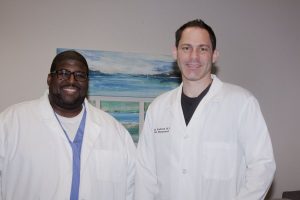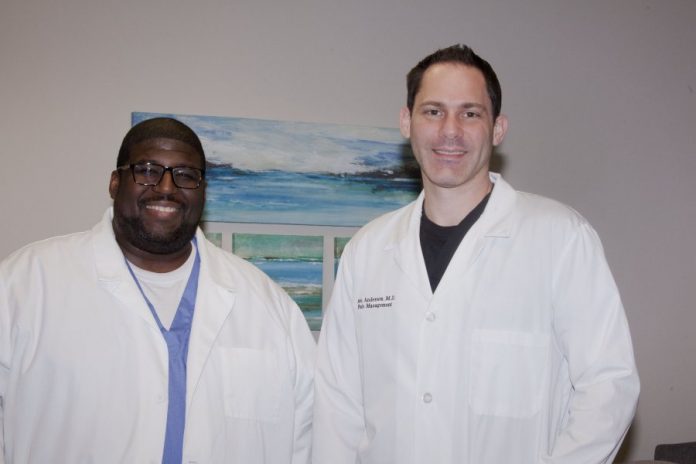
Shortly before the COVID-19 pandemic put a moratorium on elective medical procedures, the physicians at Lewisville’s Advanced Pain Institute of Texas were able to launch a new way to aid their patients.
The Medtronic Differential Target Multiplex (DTM) spinal cord stimulation waveform has allowed Dr. John Broadnax and Dr. Eric Anderson to offer relief from chronic pain to several of their patients. DTM is the most updated version of spinal cord stimulation devices that have been around in various forms since the 1980s.
“We start with a one week trial period where we look for at least 50 percent pain relief, improved sleep, and decreased pain medication use,” Dr. Broadnax said. “Then if the trial is successful we go to the implantation phase.”
The spinal cord stimulator is similar to a pacemaker and features two wires placed near the spine that are connected to the battery placed under the skin. It sends a pulse that blocks pain signals from an area of chronic pain. The DTM waveform is unique in that it not only stimulates spinal cord neurons similar to traditional spinal cord stimulation, but it also uniquely stimulates glial cells as well.
“The spinal cord stimulator works by sending a pulse that interrupts the pain signal traveling up the spinal cord to the brain so you no longer feel the chronic pain,” Dr. Anderson said. “The DTM waveform allows you to uniquely target multiple types of nerves at once and has shown an even greater decrease in pain versus traditional spinal cord stimulation waveforms.”
Advanced Pain Institute of Texas is the first in the DFW Metroplex and among the first in the country to commercially utilize the DTM waveform for spinal cord stimulation. That’s because the physicians who invented DTM mentored Broadnax and Anderson early in their careers. Dr. Broadnax took part in the early DTM clinical trials in 2016 and 2017.
The patients who have utilized the DTM waveform are very happy with the results.
“They are doing fantastic,” Dr. Broadnax said. “The patients have upwards of 80-100 percent relief of their chronic pain.”
“It’s a great tool especially in this day and age to combat the opioid crisis,” Dr. Anderson said. “Since we started the practice, we have been able to significantly decrease or even eliminate opioid usage in over half of our patients after their spinal cord stimulator implantation. It’s been a great instrument for that role. The key is careful patient selection and appropriate application of this exciting technology.”
Advanced Pain Institute of Texas can be reached at 972-866-4246.



















